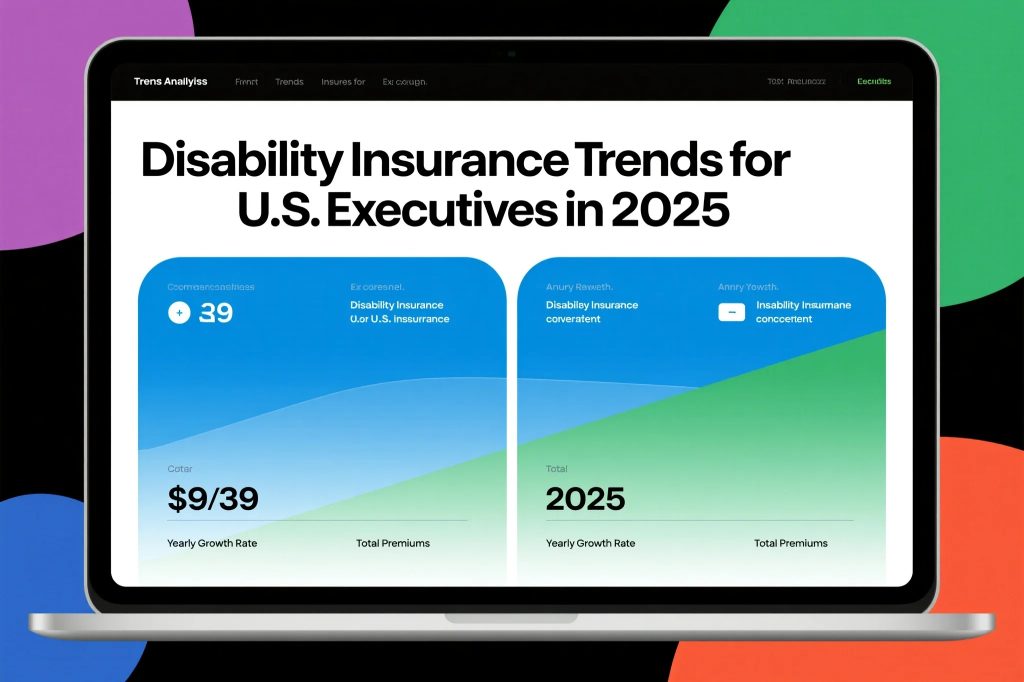The Evolution of Executive Disability Coverage
The landscape of executive health insurance plans has undergone significant transformation in 2025, with disability insurance becoming a cornerstone of comprehensive executive
compensation packages. Today's C-suite professionals face unique risks that extend beyond traditional workplace injuries, including stress-related conditions, mental health challenges, and lifestyle-related illnesses that can derail high-earning careers. Modern executive disability policies now incorporate sophisticated definitions of disability that recognize the specialized nature of executive roles, often providing benefits when an executive cannot perform the material duties of their specific occupation rather than any occupation.The integration of disability coverage within broader executive health insurance plans reflects a growing understanding that income protection is as crucial as medical
coverage for high-net-worth individuals. These comprehensive packages often include both short-term and long-term disability components, with benefit periods extending to age 67 or beyond. The 2025 versions of these plans frequently feature enhanced mental health and substance abuse coverage, recognizing the high-stress nature of executive positions and the need for comprehensive support during recovery periods.Long-Term Disability Insurance Innovations
The market for long term disability insurance USA has seen remarkable innovation in 2025, particularly in products designed for high-income professionals. New policy features include inflation protection riders that automatically adjust benefits to maintain purchasing power over extended disability periods. Some insurers now offer residual benefit provisions that provide partial payments when executives can work but at reduced capacity, acknowledging that many disabilities don't result in complete inability to work but rather diminished earning capacity.
Advanced underwriting for long term disability insurance USA now incorporates predictive analytics and comprehensive health assessments that go beyond traditional medical exams. Insurers are utilizing wearable technology data, genetic testing results, and lifestyle assessments to create more accurate risk profiles. This sophisticated approach allows for more precise pricing while enabling coverage for executives who might have been declined under traditional underwriting methods. The result is more accessible coverage with terms that better reflect individual risk profiles.
High Deductible Health Plans and Disability Coordination
The growing adoption of high deductible health insurance plans among executive compensation packages has created new considerations for disability insurance planning. While HDHPs offer cost savings through lower premiums, they can create significant out-of-pocket expenses during disability periods when income is reduced. Smart disability insurance design now includes provisions for covering health insurance deductibles and copayments, ensuring that medical expenses don't compound the financial impact of lost income.
Executives utilizing high deductible health insurance plans paired with Health Savings Accounts (HSAs) are discovering new strategies for disability planning. Some disability policies now include HSA contribution benefits, allowing continued tax-advantaged savings even during periods of disability. This integration recognizes that healthcare costs often increase during disability periods, making the tax benefits of HSAs particularly valuable. The 2025 market shows increased coordination between disability insurers and HSA administrators to streamline these benefits.

Critical Illness Coverage Integration
The process of obtaining a critical illness insurance quote has become increasingly sophisticated, with many insurers now offering integrated disability and critical illness products specifically designed for executives. These hybrid policies recognize that certain medical conditions may not meet traditional disability definitions but still create significant financial hardship. Critical illness benefits provide lump-sum payments upon diagnosis of covered conditions, while disability benefits replace ongoing income if the condition prevents work.
Modern critical illness insurance quote processes for executives often include comprehensive health screenings and family history assessments that inform both critical illness and disability coverage decisions. Insurers are developing more nuanced approaches to conditions like cancer, heart disease, and stroke, recognizing that medical advances have improved survival rates but may still result in extended recovery periods. The 2025 market features more flexible benefit structures that adapt to the realities of modern medical treatment and recovery timelines.
Freelance Executive Trends and Coverage Gaps
The rise of executive consulting and interim leadership roles has created new demand for health insurance for freelancers USA that includes robust disability protection. High-level independent consultants and interim executives often lack the group disability coverage available to traditional employees, making individual disability insurance crucial for income protection. The 2025 market has responded with specialized products that recognize the unique income patterns and professional risks of freelance executives.
Innovative health insurance for freelancers USA products now include disability income riders that can be added to major medical policies, creating integrated coverage solutions. These products often feature flexible benefit periods and occupation-specific definitions that acknowledge the specialized nature of executive consulting work. Some insurers offer portable group coverage that allows executives to maintain consistent disability protection as they move between consulting assignments or interim positions.
Technology and Disability Claims Management
The claims process for executive health insurance plans has been revolutionized by technology in 2025, with digital platforms enabling faster claim submission and processing. Artificial intelligence now assists in initial claim reviews, while telemedicine platforms facilitate remote medical evaluations for disability determinations. These technological advances have reduced claim processing times and improved accuracy in disability assessments, benefiting both insurers and policyholders.
Wearable technology integration within long term disability insurance USA policies provides continuous health monitoring that can support both prevention and claims validation. Some policies now offer premium discounts for executives who maintain healthy lifestyle metrics as measured by approved devices. During disability claims, this same technology can provide objective data about functional capacity and recovery progress, leading to more accurate benefit determinations and potentially faster return-to-work outcomes.
Tax Considerations and Benefit Optimization
The tax treatment of disability benefits has become increasingly complex for executives, particularly those with high deductible health insurance plans and multiple income sources. Benefits from employer-paid disability insurance are generally taxable, while benefits from personally-paid policies are typically tax-free. This distinction has led to sophisticated benefit design strategies where executives pay premiums personally to ensure tax-free benefits, or where employers provide gross-up payments to offset the tax impact of benefits.
The coordination between critical illness insurance quote benefits and disability payments requires careful tax planning to optimize after-tax income during periods of incapacity. Some critical illness policies now include tax advisory services to help executives navigate the complex interactions between different benefit types. The 2025 tax environment has maintained favorable treatment for most disability and critical illness benefits, though proposed legislation suggests potential changes that could affect high-income earners.
Future Outlook and Strategic Planning
The evolution of health insurance for freelancers USA and executive disability coverage reflects broader changes in work patterns and risk management. As more executives embrace flexible work arrangements and portfolio careers, the need for portable, comprehensive disability protection continues to grow. Insurers are responding with more flexible products that adapt to changing career patterns while maintaining robust income protection.
Looking ahead, the integration of executive health insurance plans with broader financial planning strategies will likely deepen, with disability insurance becoming a key component of comprehensive wealth protection strategies. The 2025 market demonstrates that successful executives increasingly view disability insurance not as a standalone product but as an integral part of their overall risk management and financial planning framework, ensuring that their earning capacity remains protected regardless of health challenges that may arise.
